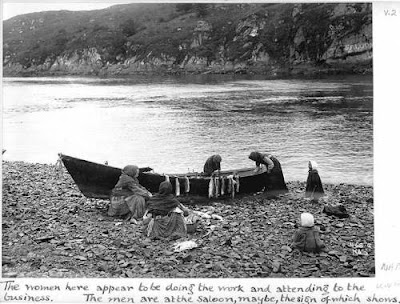
I will be on a historical sleuthing trip for the next two weeks – wish me luck!
Most disagreeable!

In the RCMP report written by Capt. Steele, he mentions Staff Sergeant James B. Hyles who served in Skagway from August 1897 to May 1898. Steele described it as “one of the most disagreeable detachments in my command. His duties were receiving and forwarding mails and stores, giving information to people entering the Yukon Territory…later working in the pay office at Bennett and discharging the duties of acting Sergeant Major at Tagish.”
Hyles had 15 years of service at that time in the NWMP.
Report of the RCMP 1898.
Peter Bertona

“Spanish Pete” was born in 1857 in Noya, Spain and came to Skagway in the gold rush. He worked as a mail carrier in Dyea in 1900 but had came to Alaska in 1896. In 1903 he beat up Joe Lee, a Tlingit native because he lived next door. The Daily Alaskan article from April 28, 1903 reported that “Spanish Pete had beat up an Indian named Joe Lee on April 27 at Dyea after he discovered Lee near a house that the Indian had recently purchased but which Pete considered his own….Spanish Pete regards Dyea as his own private preserve and resents visits from Skagway as an invasion of his rights. When Lee denied Pete’s ownership and refused to vacate the property, the latter struck him with a four-foot club which he continued to wield vigorously until help arrived.”
Thomas Thornton states in his ‘Klondike Gold Rush National Historical Park Ethnographic Overview and Assessment’ on page 211: “Native families who had traditionally harvested and smoked fish at Dyea returned to their camps to do so, often complementing traditional subsistence harvesting with cultivated gardens. However, some returnees were intimidated by whites attempting to exercise control over the area.”
The Lee family lived in Haines but had a smokehouse along the river in Dyea where they would smoke coho and dog salmon. They would also gather highbush cranberries there on the flats where it was much easier to collect than in the brush. Coho salmon eggs were mixed with gray currants and cranberries to make kanigul (“paint”) a local delicacy. The Lee family would also cut birch to sell to the railroad for fuel.
1900;Klondike Nugget 6/10/1900; Thornton page 211
Dakl’aweidi Family Tree
Deisheetaan family tree
AB at Halloween
Benny & Edith Moore
Minnie Shotridge Moore

I can’t resist posting this sweet family portrait of Minnie Moore 1874-1916 (Mrs. Ben Moore or Lingit Sai-yet) and her three children taken in 1898. In his book “New Indians” unpublished, 2010, Dan Henry says that she was scorned by local Skagway women and her “half-breed” children were taunted by classmates. In 1906 they moved to Victoria. I will post the names of the kids later when I get them.
J.B. Moore Collection
David Legg Brainard

David Brainard was born in 1856 in Norway, New York. On Sept. 13, 1876, 19-year-old David Brainard left home to travel to Philadelphia and view America’s first successful world’s fair, the Centennial Exposition. After taking in many marvels of the Machine Age, Brainard boarded a train for home. At New York City, he changed trains and reached into his pocket for money to buy a ticket, but there was none. Too proud to write his family for funds, Brainard took the free ferry to the US Army Post at Governor’s Island and joined the Regular Army. He didn’t know it, but David Brainard was on his wasy to becoming one of those rare individuals in military history who rose from Private to General by pulling himself up by his bootstraps.
When Brainard joined the Army, it had been only three months since Custer’s command was mauled at the Little Big Horn, and in no time, Brainard was sent to Montana Territory, to serve with the Second Cavalry against the Northern Cheyenne and Sioux Indians. The square-jawed Brainard was a keen soldier, who firmly believed orders clearly issued should be obeyed.
On May 7, 1877, Brainard participated in the Battle of Little Muddy Creek against the Sioux under Chief Lame Deer, and suffered wounds to his right hand and a gunshot wound to his right cheek, affecting his eye. Over half a century later, in 1933, he received the Purple Heart for his injuries.
He was a Captain in the 14th Infantry when he arrived in Skagway in February 1898. Captain Brainard was appointed Purchasing and Disbursing Officer of the Alaska Relief Expedition and was based in Dyea. Brainard’s relief expedition was intended to address the “sufferings” of the Dawson miners during the Alaskan Gold Rush, but they found the miners well supplied and needed no relief. He is most famous for being the last survivor (in 1935) of the United States’ Lady Franklin Bay Expedition (1881-84), an ordeal of unimaginable hardship. Only six survivors were rescued in 1884 after being stranded in the Arctic for two years in the harshest conditions.
Brigadier General Brainard died at the age of 90 on March 22, 1946 in Washington D.C. and is buried in Arlington.
military rec; ipy.org bio; “Duty Station Northwest” by Lymon L. Woodman
Michael Bernard McKanna
Michael McKanna was born in 1849 in Waterford County Ireland. He moved to Alaska with his family and went mining in the Yukon gold fields with his two oldest sons, Jim and Emmet. There, he came down with Brights Disease, a kidney ailment. Making his way back toward Douglas with Jim as his support, Michael died near the shores of Lake Bennett on June 13, 1899. When news reached Douglas, his daughter Elizabeth took a boat to Skagway and the White Pass train to Bennett. She and Jim buried their father’s body in the small Bennett cemetery.
family McKanna website:lauralei.com; familysearch; headboard 2009; listed in Atlin bios





